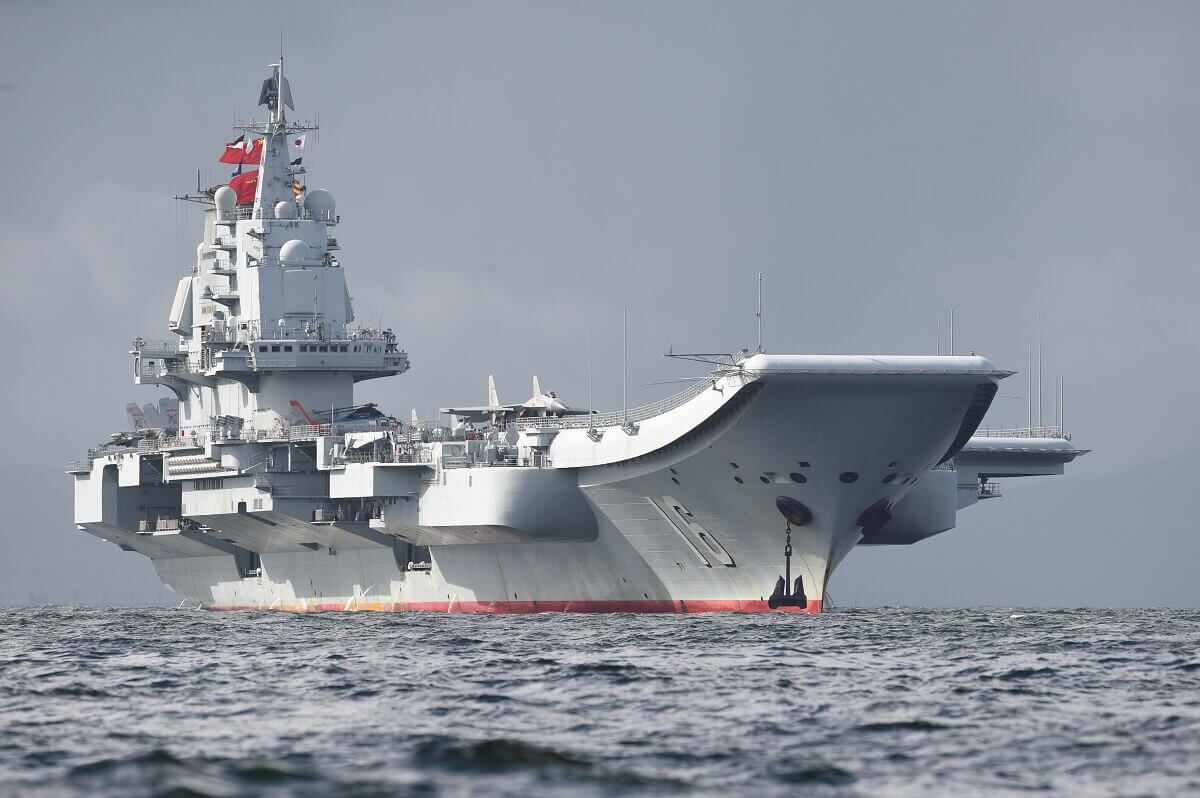An aircraft carrier group was led through the Taiwan Strait by Shandong—China’s newest carrier—to the South China Sea for routine military drills on Monday, December 21. While it is not the first time that Chinese vessels have passed in such close proximity to Taiwan, the passage comes amidst a time with tensions between the mainland and Taiwan are running high.
According to the statement by the Chinese navy, the warships set out from the northern Chinese port of Dalian on Thursday and are scheduled to carry out “normal arrangements made in accordance with annual plans.” The statement added, “In the future, we will continue to organise similar operations based on training needs.”
The Chinese navy also announced that the fleet had managed to successfully navigate the sensitive and narrow area “smoothly” on Sunday and that it tailed a US warship passing the same region only a day earlier. China has been working on improving its carrier operations, but its experience pales in front of the US navy, which has operated integrated carrier battle groups with multiple vessels for decades.
The Shandong, which is China’s second carrier, was commissioned exactly a year ago. It was accompanied by four other warships for the naval exercises. According to Reuters, the carrier has since completed tasks like carrier-based aircraft take-off and landing, and use of its weapons. The navy further said of the accompanying warships that their combat capability had “been continuously improved in experimental training”. To keep watch on the movements of the Chinese carriers, Taiwan had stationed six warships and eight air force aircraft to “stand guard”.
Taiwan, which is claimed by Beijing as part of its own territory, has been consistently increasing its defence budget every year and strengthening its multilateral relations to deter Chinese dominance over its sovereignty. Recently, Taipei invested in the manufacture of eight new domestically produced submarines to counter Chinese influence in the contentious South China Sea. In September, nearly 40 Chinese warplanes crossed the mid-line of the Taiwan Strait as part of real-combat aerial military drills organized by the Chinese People’s Liberation Army (PLA). In July last year, China went to the extent of warning Taiwan that it was “ready for war” if Taiwan made moves towards independence, and thus Taiwan has continued its policy of scaling up of military spending as a calculated effort towards protecting its national security.
The spillover of the rising tensions has also gone beyond national security. Only last week, Taiwan began the official process of joining the Comprehensive and Progressive Agreement for Trans-Pacific Partnership (CPTPP), a multilateral trade agreement that Beijing is not a member of; Canada, Australia, Brunei, Chile, Japan, Malaysia, Mexico, New Zealand, Peru, Singapore, and Vietnam are part of the current agreement. By attempting to joining this multilateral deal with other Indo-Pacific and Western neighbours, Taiwan seeks greater freedom from Chinese calls for reunification.
Chinese Aircraft Carriers Pass Through Taiwan Strait Amidst Rising Tensions With Taiwan
A fleet of Chinese aircraft carriers sailed through the Taiwan Strait for military drills in the disputed South China Sea. This follows a recent journey by a US warship through the same waters.
December 21, 2020

SOURCE: ANTHONY WALLACE/AFP
